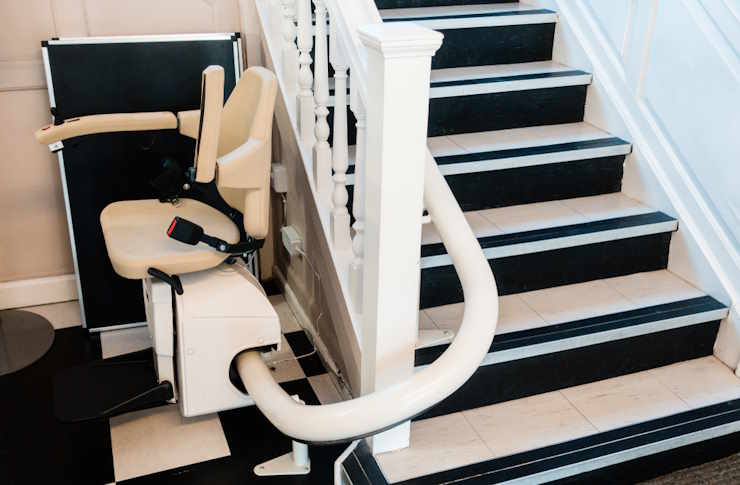Exploring Accessible Solutions for Home Stair Lifts and Personal Elevators
Home stair lifts and personal elevators have become essential for many seeking greater independence and safety. With various options available—from portable platforms to mini residential elevators—understanding the features and benefits of each can help you make an informed decision that fits your living space and mobility needs.

What are the different types of home stair lifts?
Stair lifts come in several varieties to accommodate different staircase designs and user needs. Straight stair lifts are the most common, designed for straight staircases without landings or turns. Curved stair lifts are custom-made to fit staircases with curves, landings, or multiple flights. Outdoor stair lifts are weatherproof versions for exterior stairs. Perch stair lifts, also known as standing stair lifts, are ideal for those who have difficulty bending their knees or prefer to travel in a near-standing position.
How do portable lifting platforms benefit users?
Portable lifting platforms offer flexibility and convenience for those who need temporary or occasional accessibility solutions. These platforms can be easily moved and set up in different locations, making them ideal for renters or those who frequently visit homes with stairs. They’re typically more cost-effective than permanent installations and don’t require structural modifications to the home. Portable platforms are also beneficial for individuals recovering from surgery or temporary mobility issues, providing a short-term solution without the commitment of a permanent stair lift.
What features should seniors look for in residential elevators?
Residential elevators for seniors should prioritize safety, ease of use, and comfort. Key features to consider include:
-
Non-slip flooring to prevent accidents
-
Easy-to-reach controls with large buttons and clear labeling
-
Automatic doors for effortless entry and exit
-
Emergency call buttons and backup power systems
-
Smooth and quiet operation to reduce anxiety
-
Ample lighting inside the cab for visibility
-
Handrails for additional support and stability
These features ensure that seniors can navigate between floors safely and independently, enhancing their quality of life at home.
How do you choose the right personal elevator for your home?
Selecting the right personal elevator involves considering several factors:
-
Available space: Measure the area where the elevator will be installed to determine the appropriate size and type.
-
Travel distance: Consider how many floors the elevator needs to serve.
-
Load capacity: Ensure the elevator can accommodate the user’s weight and any mobility devices.
-
Power source: Choose between hydraulic, pneumatic, or electric systems based on your home’s infrastructure and personal preferences.
-
Aesthetics: Look for designs that complement your home’s interior.
-
Budget: Factor in installation costs, maintenance, and potential home modifications.
-
Local building codes: Ensure compliance with regulations in your area.
Consulting with a professional elevator installer can help you navigate these considerations and find the best solution for your needs.
What are the key considerations for mini elevators in private residences?
Mini elevators, also known as home lifts or through-floor lifts, are becoming increasingly popular in private residences due to their compact size and easier installation process. When considering a mini elevator, keep these factors in mind:
-
Footprint: Mini elevators require less space than traditional elevators, making them suitable for smaller homes.
-
Installation requirements: Many mini elevators can be installed without a pit or machine room, reducing structural modifications.
-
Energy efficiency: Look for models with low power consumption to minimize operating costs.
-
Noise levels: Choose quieter models to maintain a peaceful home environment.
-
Maintenance needs: Consider the frequency and cost of required maintenance.
-
Safety features: Ensure the elevator has essential safety mechanisms like emergency lowering systems and interlocks.
-
Customization options: Some mini elevators offer personalization in finishes and features to match your home’s style.
How do stair lifts and personal elevators compare in terms of cost and installation?
When deciding between stair lifts and personal elevators, it’s important to consider both cost and installation factors:
| Solution | Average Cost Range | Installation Time | Structural Changes Required |
|---|---|---|---|
| Straight Stair Lift | $3,000 - $5,000 | 1-2 days | Minimal |
| Curved Stair Lift | $10,000 - $15,000 | 2-5 days | Minimal |
| Mini Elevator | $15,000 - $35,000 | 3-5 days | Moderate |
| Traditional Home Elevator | $30,000 - $50,000+ | 1-2 weeks | Significant |
Prices, rates, or cost estimates mentioned in this article are based on the latest available information but may change over time. Independent research is advised before making financial decisions.
Stair lifts generally offer a more affordable and less invasive option, with straight stair lifts being the most economical choice. They require minimal structural changes and can often be installed in a day or two. Personal elevators, while more expensive, provide full vertical transportation and may add more value to your home. Mini elevators strike a balance between cost and functionality, offering a compact solution with moderate installation requirements.
In conclusion, both stair lifts and personal elevators offer valuable accessibility solutions for homeowners. The choice between them depends on individual needs, home layout, budget, and long-term plans. By carefully considering the types, features, and considerations discussed, you can make an informed decision that enhances your home’s accessibility and your quality of life.




